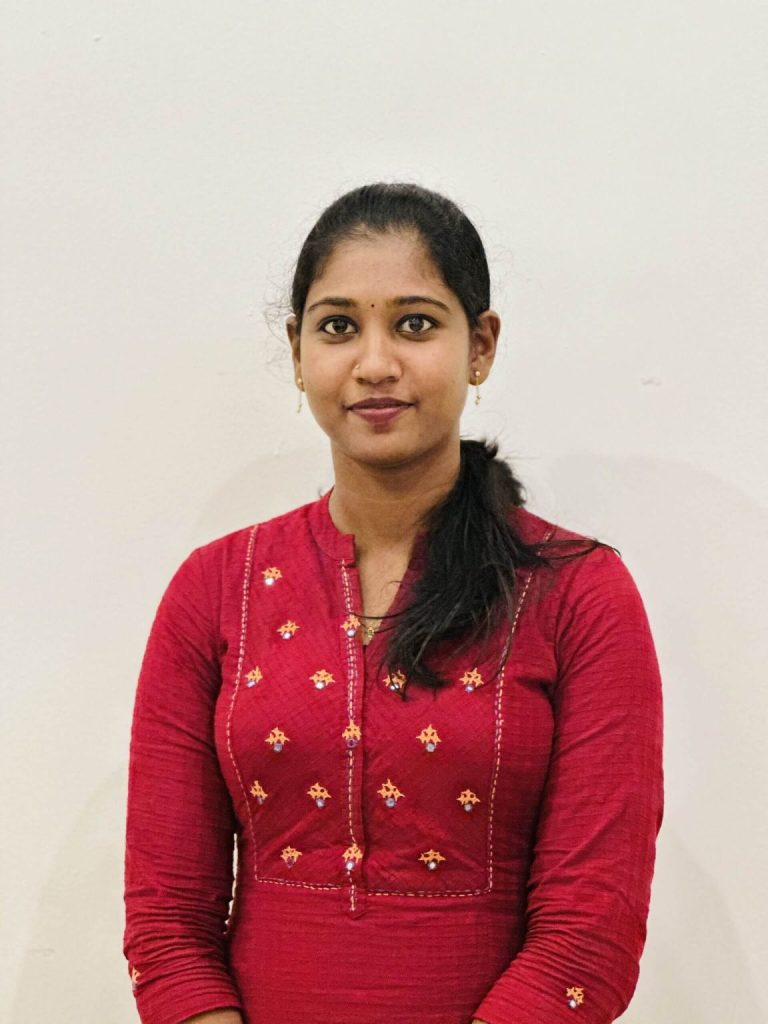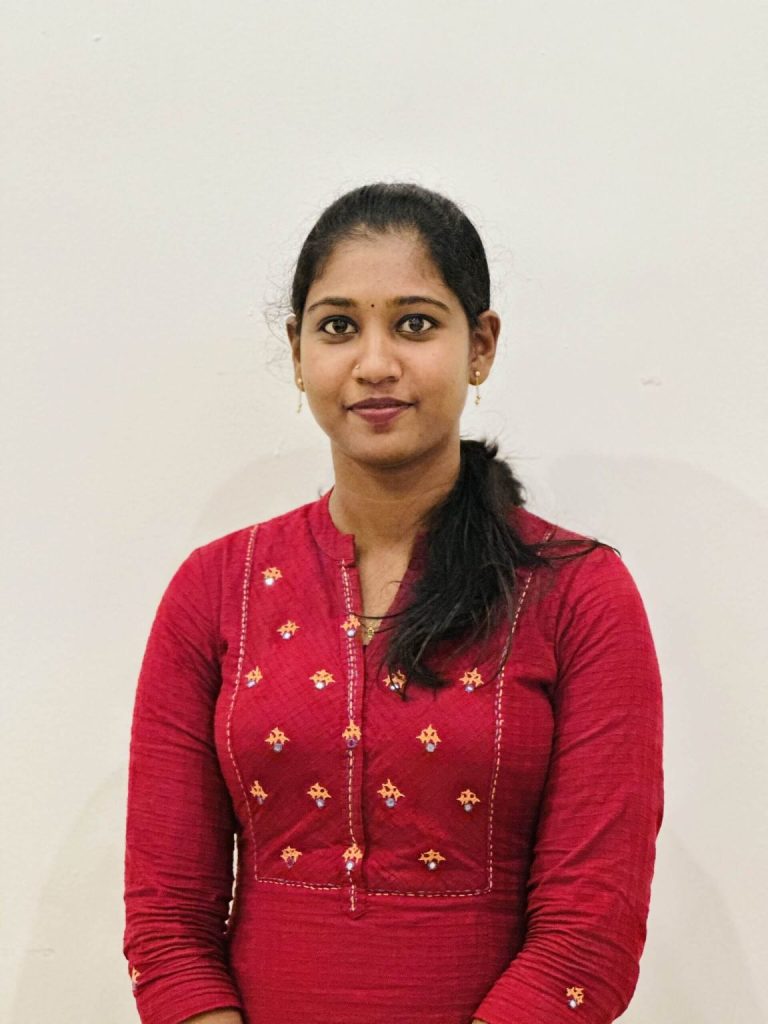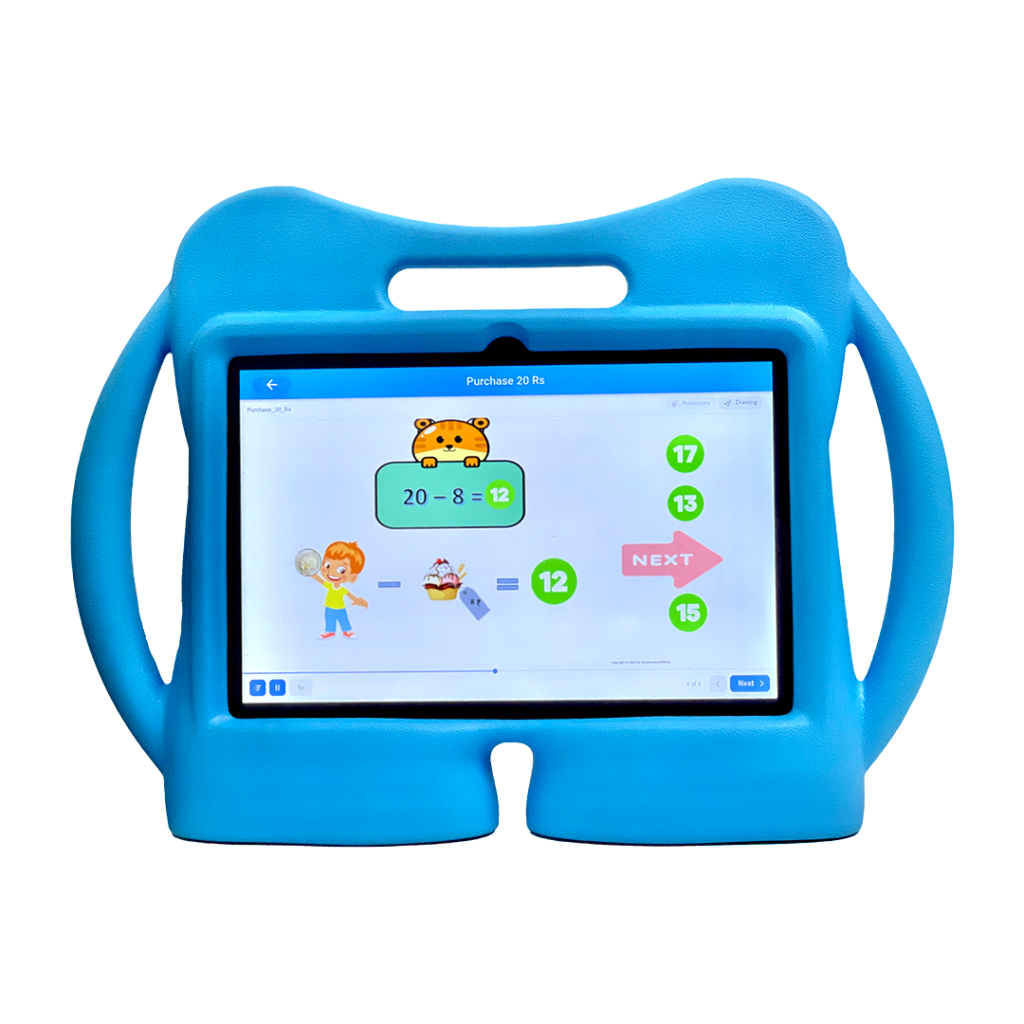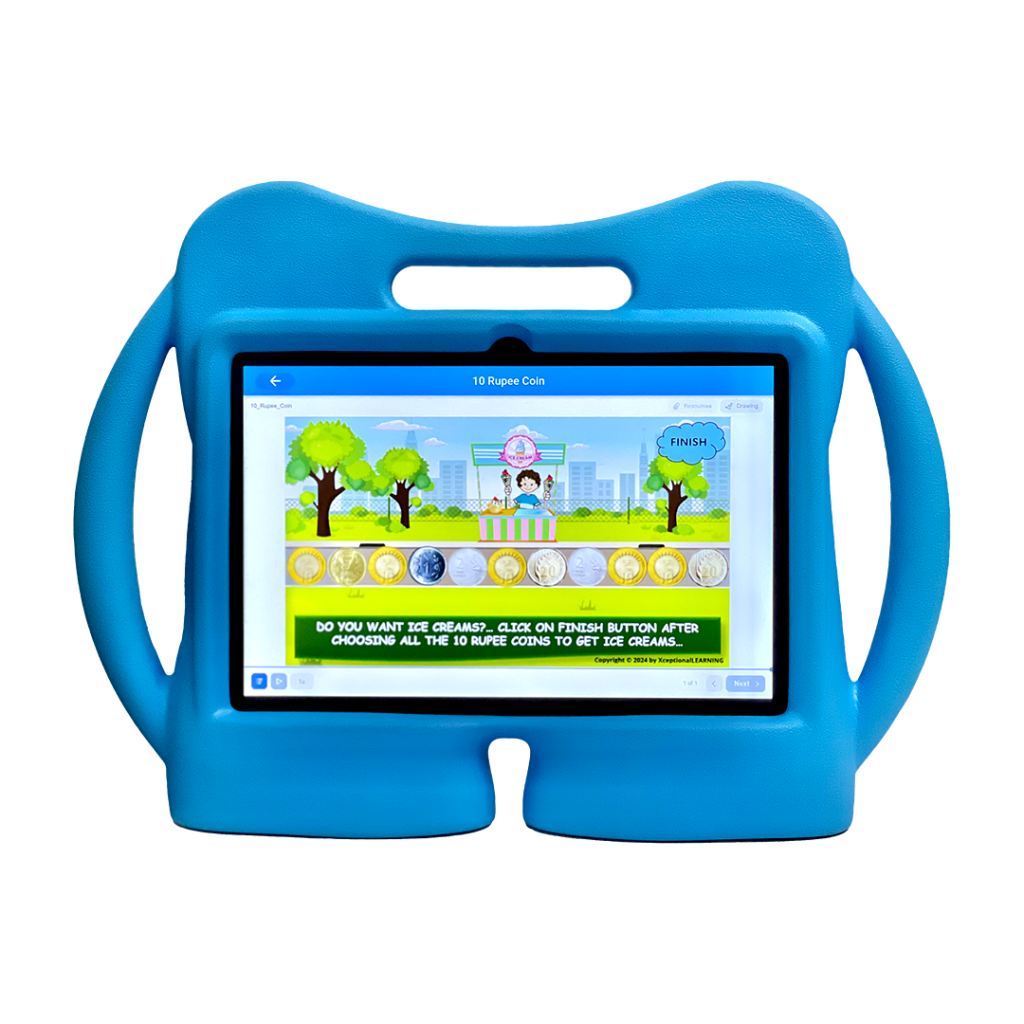
Algebra often feels challenging for most children. As it deals with unknowns, patterns, and abstract rules rather than concrete numbers, for those with developmental delays or special needs, it is even more so. But what if there is a way to make this an interesting learning experience? That is what VergeTAB, powered by the XceptionalLEARNING platform does! It transforms abstract problems into interactive, visual, and scaffolded learning experiences.
Why Algebra Matters
- Builds reasoning by helping children understand relationships between numbers.
- Encourages problem-solving through breaking complex problems into steps.
- Supports higher learning and real-world applications.
- Develops abstract thinking beyond counting to working with unknowns.
Below, we explore how algebraic concepts can be taught step by step, moving from traditional problem-solving methods to VergeTAB’s unique visual approach, thus ensuring children not only solve problems but also understand and apply concepts in daily life.
Why Visualization Matters in Special Education Mathematics
Children with special needs often process information differently. Visualization helps them connect concepts, repeat learning safely, and gain confidence.
- Makes abstract concrete
- Numbers and symbols become stories, objects, and interactive activities.
- Patterns appear as colourful sequences that children can move, hear, or build.
- Algebra shifts into balance puzzles rather than intimidating equations.
- Reduces mathematical-related anxiety
- Learning feels like discovery and play instead of pressure.
- Mistakes are reframed as learning opportunities, not failures.
- Supports therapy goals
- Strengthens attention, sequencing, memory, and problem-solving.
- Builds confidence in parallel with academic skills.
Skills like attention to detail, conceptual understanding, confidence with abstract ideas, step-by-step reasoning, and growing independence are strengthened through this process.
Why VergeTAB Stands Out
- Blank Tablet, Focused Learning: No distractions, only therapy-based activities.
- Therapy-First Design: Integrates with XceptionalLEARNING platform, aligned with developmental goals.
- Safe Environment: Children learn at their own pace, gaining confidence with instant visual feedback.
With VergeTAB, children can approach and solve algebraic problems more effectively and independently, supported by visualization and therapy-aligned design.
1. Understanding Algebraic Thinking Through Patterns
Standard Mathematical Approach (Paper Method)
- Complete the sequence 3, 6, 9, __, 15.
- Step A — Observe: Difference between terms is +3.
- Step B — Rule Formation: Each number increases by 3.
- Step C — Solve: 9 + 3 = 12. The missing term is 12.
How VergeTAB Makes It Visual
- Initial Presentation:
- Activity “Hop by Three” shows tiles 3, 6, 9, __, 15.
- Audio prompt: “What number comes next if we keep adding three?”
- Scaffolding:
- Model Rule: Animation highlights +3 hops with voice cues.
- Guided Attempt: Child drags candidate tiles (10, 12, 13). Wrong choice = gentle feedback.
- Self-Correction: Correct answer (12) reinforced with sparkle and audio.
Generalization Example:
- Problem: Start at 4 and add three—find the next three numbers.
- Paper solution: 4, 7, 10, 13.
- On VergeTAB:
- Animation hops +3 from 4 onward.
- The child fills in the missing tiles step by step.
- Device logs accuracy and time for therapist review.
Skills Developed: sequencing, pattern recognition, attention, and rule extension
2. Introducing Variables in Simple Algebra
Standard Mathematical Approach (Paper Method)
- Problem Example: Solve x + 4 = 7.
- Step A: Unknown + 4 =7.
- Step B: Subtract 4 from both sides → x = 3.
How VergeTAB Makes It Visual
- Initial Presentation:
- Blank slot shows equation: □ + 4 = 7.
- Audio prompt: “What number should go here to make seven?”
- Scaffolding:
- Concrete Visuals: 7 objects shown; 4 highlighted; gap remains.
- Guided Attempt: Options (2, 3, 5). Wrong = mismatch animation.
- Self-Correction: Correct choice (3) completes the set with reinforcement.
Generalization Example:
- Problem: Solve x + 5 = 9.
- Paper method: 9 – 5 =4, so x = 4.
- On VergeTAB:
- The basket shows 9 fruits, 5 highlighted, 4 missing.
- Child drags 4 into a blank tile.
Complex Problem (10–12 yrs):
- Problem: Solve x – 7 =15.
- Paper method: Add 7 to both sides → x = 22.
- On VergeTAB:
- Shows 15 objects + missing section labeled “7 more.”
- Child explores until the total = 22.
Skills Developed: balancing, logical reasoning, and fluency with basic equations
3. Applying Algebra to Real-World Word Problems
Standard Mathematical Approach (Paper Method)
- Sara has 5 apples. She buys x more. Now she has 8. How many did she buy?
- Step A: 5 + x = 8.
- Step B: Solve → x = 3.
How VergeTAB Makes It Visual
- Initial Presentation:
- Sara’s basket has 5 apples; the target basket shows 8.
- Blank slot for missing apples.
- Scaffolding:
- Model: Animation adds apples.
- Guided Attempt: Options 2, 3, 4. Wrong = incomplete basket.
- Self-Correction: Correct = 3 apples, audio reinforcement.
Generalization Example:
- Problem: Tom has 10 balloons, gives away y, now he has 6. How many did he give away?
- Paper method: 10 – y = 6 → y = 4.
- On VergeTAB: Balloons disappear one by one until 6 remain; the child fills in the missing value.
Complex Problem (10–12 yrs):
- Problem: A toy costs 25. You pay with a 50 note. How much change do you get? Represent with algebra.
- Paper method: 50 – x = 25 → x = 25.
- On VergeTAB:
- Coins animate dropping into slots.
- Child drags “25” as the missing change.
Skills Developed: bridges real-life problem-solving with algebra, strengthens symbolic thinking, and builds practical independence.
4. Building Multi-Step Algebraic Reasoning
Standard Mathematical Approach (Paper Method)
- Solve 2x + 3 = 9.
- Step A: Subtract 3 → 2x = 6.
- Step B: Divide by 2 → x = 3.
How VergeTAB Makes It Visual
- Initial Presentation:
- Shows two baskets + 3 =9 total.
- Audio: “What number in each basket makes this true?”
- Scaffolding:
- Model: Visual objects split across two baskets + extras.
- Guided Attempt: Options for x (2, 3, 4). Wrong = mismatch.
- Self-Correction: Correct = x = 3, animation confirms.
Generalization Example:
- Solve 3x + 2 = 11.
- Paper method: 3x = 9 → x = 3.
- On VergeTAB:
- Three baskets + 2 extra = 11.
- The child distributes objects equally.
Complex Problem (10–12 yrs):
- Solve 4x – 5 = 15.
- Paper method: 4x = 20 → x = 5.
- On VergeTAB:
- The visual shows 4 groups with 5 removed.
- Child adjusts until balanced at 15.
Skills Developed: multi-step reasoning, abstract manipulation, and confidence with symbolic equations.
Real-Life Applications of Algebra for Children with Special Needs
- Budgeting: Counting how much money is needed if an item costs x and they already have some money.
- Time Management: Solving “If school starts in 30 minutes and it takes y minutes to get ready, how much time is left?”
- Social Skills: Predicting outcomes like “If three friends each bring x toys, how many toys are there in total?”
- Daily Routines: Understanding sequences: “If brushing takes 5 minutes and breakfast takes x minutes, the total is 20. How long is breakfast?”
Makes algebra functional by connecting problem-solving to everyday independence, confidence, and adaptive skills.
Practical Tips for Parents, Educators, and Therapists
- Start small, progress gradually.
- Begin with colours, shapes, or toys before introducing numbers and letters.
- Use VergeTAB daily in short sessions.
- 10–15 minutes of focused activity every day is more effective than occasional long sessions.
- Encourage exploration over correctness.
- Mistakes are valuable learning opportunities. VergeTAB’s feedback is gentle and non-judgmental.
- Blend offline and digital.
- Reinforce skills with real-life objects like blocks, fruits, or beads alongside VergeTAB activities.
- Collaborate with therapists
- The XceptionalLEARNING Platform ensures that progress can be shared and tracked by professionals, making therapy more effective.
Why This Matters for Special Needs Learners
- Children with developmental delays often need multiple ways to understand the same idea.
- By solving the problem first with real-life objects or verbal reasoning, and then visualizing it on VergeTAB, they link thinking to doing.
- This not only makes mathematics easier but also reduces frustration and builds confidence.
A Tool for Therapists, Educators, and Parents
VergeTAB does not replace human teaching—it enhances it.
- For Therapists: Activities are therapy-aligned, reinforcing goals in occupational, speech, or developmental sessions.
- For Educators: Mathematics lessons come alive, making classroom participation easier for children with delays.
- For Parents: Families can use VergeTAB at home to practice what was learned in therapy, turning daily life into a learning opportunity.
With XceptionalLEARNING integration, everyone stays connected—progress can be tracked, shared, and celebrated across home, school, and therapy sessions.
Conclusion
Algebra is more than solving equations—it is a way of seeing patterns, balancing relationships, and making sense of the world. VergeTAB, powered by the XceptionalLEARNING platform, transforms learning into discovery through its Interactive Learning Device for Children and Digital Therapy Activity Device features. From spotting patterns to solving real-life word problems, every activity builds reasoning, creativity, and confidence while supporting real-world independence.
Ready to transform learning for your child? Contact us today and explore how VergeTAB and XceptionalLEARNING can make algebra joyful, interactive, and lasting.
Related Reading
For more insights on how VergeTAB makes mathematics concepts simple and visual for children with special needs, see our previous blogs on Making Fractions, Estimation, and Probability Simple in Special Education with VergeTAB and Teaching 2D and 3D Geometry in Therapy with VergeTAB.



